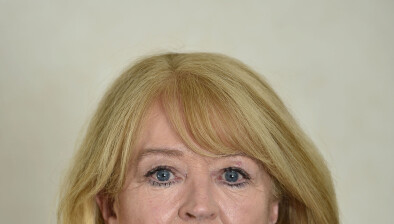Court of Appeal: Damages increased to €372,000 for psychological injuries caused in car accident

Killian Flood BL
The Court of Appeal has increased the award of damages for a plaintiff who was hit by a car to €372,000. The plaintiff had appealed the decision of the High Court, which had awarded her with €265,000 after it was determined that she was 45 percent liable for the accident.

About this case:
- Citation:[2021] IECA 62
- Judgment:
- Court:Court of Appeal
- Judge:Mr Justice Seamus Noonan
On Friday, Mr Justice Seamus Noonan held that the trial judge was wrong to only hold the defendant 55 percent liable for the accident, as it was clear that he was not keeping a proper lookout on the road. Even though the plaintiff was crossing the road under a red light, the defendant bore the “overwhelming responsibility” for the accident, the court said.
The court also dismissed a cross-appeal by the defendant seeking to reduce the award of special damages for loss of earnings and opportunity.
Background
The plaintiff, Ms Cheng Zhang was a Chinese national who came to Ireland to study English. She later got a job in an accountancy firm and was in the process of completing her ACCA exams.
In 2011, the plaintiff was crossing Merrion Street, Dublin, which was controlled by traffic lights. Traffic was stopped on a red light and the plaintiff began to cross the road. Ms Zhang walked across the road for about six seconds before being hit by the defendant, Mr Stephen Farrell. The defendant had driven down Merrion Row in the direction of Baggot Street and just turned left in to Merrion Street Upper when he collided with the Ms Zhang.
CCTV footage established that the defendant had been driving under a green/orange light when turning onto Merrion Street, while the plaintiff had been crossing under the “red man.” The plaintiff had claimed that the pedestrian light was orange as she crossed.
The expert evidence in the case stated that it was “almost inconceivable” that the plaintiff had a green light in her favour on the basis of the camera footage. However, it was accepted that if Mr Farrell had been looking at the road, then the collision would have been “immediately obvious.” The fact that Mr Farrell was not keeping a proper lookout was emphasised by his own evidence, where he stated that he only saw the plaintiff at the last moment. He did not brake prior to the impact, although there was no evidence that he was speeding.
The plaintiff’s physical injuries were described as relatively modest, soft tissue injuries, with the most serious being torn knee ligaments. However, she suffered a severe psychological reaction to the accident. Ms Chang said she felt paralysed and was unable to move for an hour after the incident. This developed into a “very severe form of post-traumatic stress disorder,” along with other illnesses such as fibromyalgia and irritable bowel syndrome.
At the trial, the expert psychiatrists on both sides could not agree on the psychological injuries in the case. The plaintiff’s expert was of the opinion that she would never work again. The defendant’s expert opined that the Ms Zhang’s condition was due to an anxiety disorder and that she could return to work in two years with appropriate treatment. It was also argued by the defendant that the claim for psychiatric injury came “very late in the day” and that the plaintiff’s physical ailments could not be explained by physical injuries.
In the High Court, the trial judge accepted that the Ms Zhang had suffered significant psychiatric damage from the accident, which manifested itself in physical injuries. As such, he awarded €170,000 in general damages. The court also considered that Ms Zhang was likely to be out of work for a further five years, with a further two years working at 50 percent capacity. As such, the court awarded special damages for loss of earnings.
However, the trial judge was of the opinion that the plaintiff was partly liable for the accident by crossing the road on a red light. As such, he apportioned 45 percent liability to the plaintiff, leaving her with €265,000.
Court of Appeal
In his judgment, Mr Justice Noonan first considered the issue of liability and the plaintiff’s submission that liability should be apportioned on a 100 percent basis. Having regard to the evidence, and in particular that Mr Farrell was not paying attention to the road, the court determined that the defendant was 80 percent liable for the accident. The court held that Mr Farrell had breached the most fundamental obligation of a driver, which was to keep proper attention on the road. This duty was heightened in an urban setting such as Dublin. It was said that “the magnitude of the defendant’s negligence was of a much higher order than that of the plaintiff,” and the defendant bore the “overwhelming responsibility” for the accident.
However, it was accepted that the trial judge’s finding that the plaintiff crossed on a red light was “unimpeachable” and therefore some blame had to be apportioned to her as well.
On the issue of quantum, the court applied Rossiter v. Dun Laoghaire Rathdown County Council [2001] 3 IR 578 and held that the general damages awarded were appropriate in the case. The court said that €170,000 for pain and suffering was satisfactory having regard to the severe nature of the plaintiff’s injuries, but also to the expectation that the plaintiff would ultimately return to a relatively normal life. The damages were roughly one-third of what a catastrophically injured person would receive and there was no reason to think this amount was disproportionate.
Further, it was noted by both the trial judge and the Court of Appeal that the plaintiff was a litigant in person who displayed “extraordinary intelligence and resilience” in presenting her case to the court. As such, there was good reason to think that her condition would improve if the litigation and financial concerns were removed from her life.
Finally, Mr Justice Noonan also considered the defendant’s cross-appeal relating to the calculation of the plaintiff’s loss of earnings. The court was satisfied that the trial judge’s conclusions about the plaintiff’s career prospects were supported by credible evidence. The court also noted that the plaintiff’s losses were not assessed on the basis of her becoming a qualified accountant, but under her “modest” pre-accident employment wages.
Conclusion
Mr Justice Noonan allowed the appeal on liability and dismissed the cross-appeal on the loss of earnings. The court upheld the trial judge’s findings on the overall value of the case and substituted liability at 80 percent in favour of the plaintiff. As such, Ms Zhang received €372,000.








